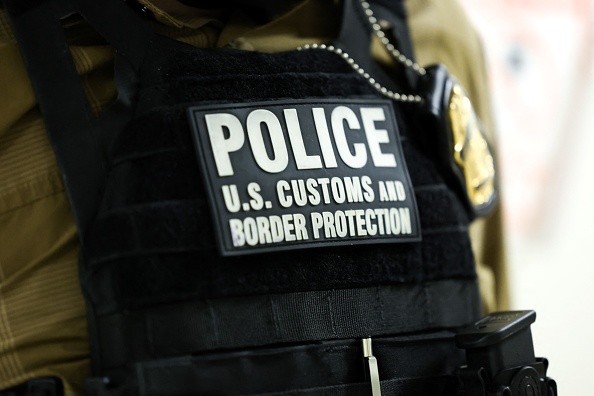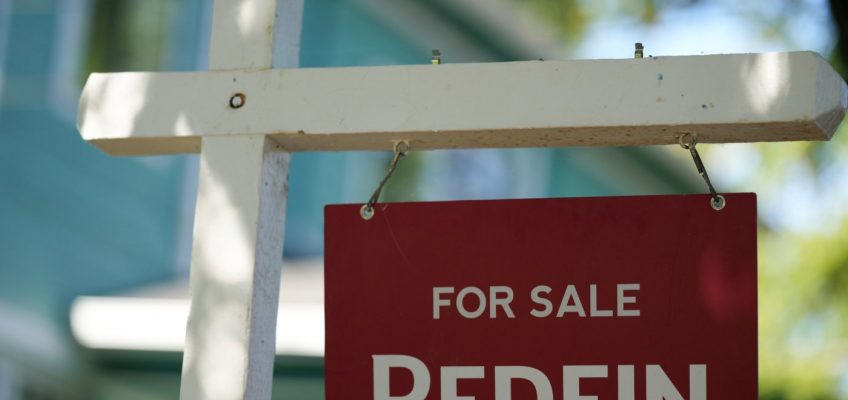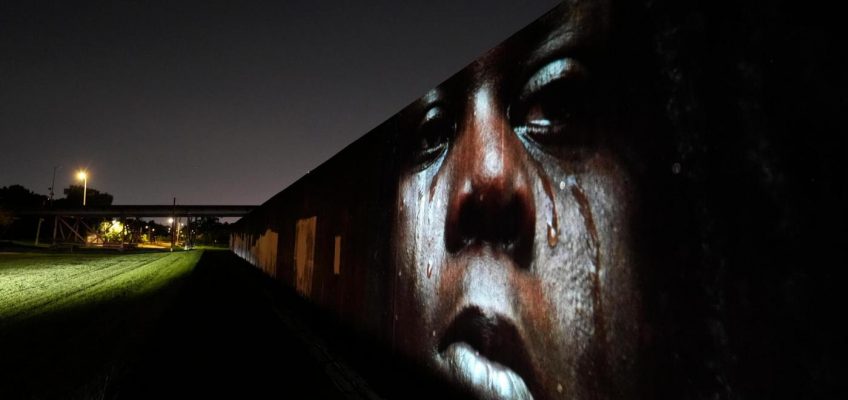By MIKHAIL ZINSHTEYN, CalMatters
Cal Poly Pomona postponed its annual fall job fair this week after students, alumni and community members criticized its inclusion of Customs and Border Protection as an in-person recruiter, underscoring the heightened sensitivity about immigration agencies on college campuses this fall.
The interim president of the Los Angeles County campus with nearly 28,000 students — the majority of whom are Latino — said leadership responded to the criticism and decided to rethink their approach to job fairs.
“We have listened carefully and are leveraging this input to design career programming this fall that is more personal and better tailored to the evolving needs of our students and to workforce demands,” said Iris S. Levine in a public letter Monday. “I want to thank those of you who reached out and shared your perspectives with honesty and passion,” she added. Tracee Passeggi, the career center director at Cal Poly Pomona, said she received 200 to 250 emails between late Thursday and Monday protesting the presence of immigration law enforcement at the job fair.
In the days leading up to the postponement, social media swirled with rumors that Immigration and Customs Enforcement would be among the employers at the September job fair, something the campus said is not true in a Tuesday FAQ. “FYI @calpolypomona invited ICE to come and recruit at a job fair on September 18th from 10:30am-2:30pm. Even when calling themselves a HSI (Hispanic serving institution). Stand up against the racial profiling and ICE bounty hunters. Contact: Career@cpp.edu, President@cpp.edu, Admin_affairs@cpp.edu,” read one message from a poster on the campus’s main Facebook page on Sunday. More than 106,000 employers share job updates on the Cal Poly Pomona career portal called Handshake, a common software tool among college campuses. Both Immigration and Customs Enforcement and Customs and Border Protection are in the system and receive updates about campus career events. But ICE has never taken part in a career fair, the FAQ said.
Meanwhile, Customs and Border Protection, the multi-pronged agency that oversees Border Patrol, a law enforcement agency that’s conducted immigration raids in California, was among the roughly 200 employers registered for the career fair slated Sept. 18-19 and has participated in almost every job fair at the campus since 2017. Billy Gallagher, the faculty union senior field representative at Cal Poly Pomona, said the hyper-vigilance about immigration law enforcement on the campus makes sense, especially given that judges have faulted the agencies for using racial criteria in their arrests in the Los Angeles area. The federal government under the current Trump administration has appealed a preliminary injunction from a district judge to the U.S. Supreme Court.
“There’ve been arrests, U.S. citizens swept up. At this point, it’s hard to tell even who’s who in some of these raids, so there was definitely concern among faculty for sure,” Gallagher said, adding that officers at both Customs and Border Protection and Immigration and Customs Enforcement have led immigration raids in California. Most of the students on campus are Latino, he also noted.
Career fair postponed, not cancelled
The campus doesn’t have a new date for the career fair, said Passeggi of the career center, but she aims to finalize those plans by late September, she said in an interview. The postponed career fair was technically two events on consecutive days, and Customs and Border Protection was scheduled to appear on just one of those days with some 80 other employers.
Still, both dates were postponed. Passeggi said her team will use the opportunity to organize the fairs in new ways. What that means, she doesn’t know yet, but she pointed to the job fairs for the school’s hospitality and education majors that are smaller and subject-specific. Each event includes 200 students and 35 employers. The postponed event usually draws more than 1,500 students. It’s also outside and exposed to the elements on hot or, in the spring, possibly rainy days. She’s unsure if the redesigned fairs will be virtual or in-person. “We have received some feedback from students saying that they were disappointed that the career fair was canceled,” she said, noting that her office was battling two types of misinformation: that the fair was called off and that Immigration and Customs Enforcement was among the employers. Neither is true. The Career Center will still support students seeking to connect with employers and organize internships, she said. With much of the email and social media blowback occurring over the weekend, she thinks the campus leadership rallied fast. “We moved as quickly as we could” in a transparent manner, she said, pointing to the FAQ and letter from the president. Nonetheless, “I can definitely hear where our community is coming from,” she said.
Faculty, student perspectives
The campus’ response to the outcry was sensible, said Mario Guerrero, a professor at Cal Poly Pomona who is chair of the university’s Political Science Department. “I think it speaks volumes about (Levine’s) leadership and being able to hear what folks were saying, but also respond appropriately. It’s a super delicate situation for fairly obvious reasons,” he said. “Even reading the comments now, people are still unhappy, and that’s always going to be part of it, but at least you know you can point to leadership being able to make proactive moves to protect the students however they can.” Guerrero also thinks that the worry over immigration law enforcement as an employer at a job fair tapped into wider fears about those federal agents entering campus and arresting students, faculty or staff. On Instagram, a student group that’s a subsidiary of the faculty union and that has chapters across multiple Cal State campuses, criticized Cal Poly Pomona for writing that it cannot bar employers from participating in its job fair because it is a public university. “Disappointed once again in administration, ignoring the safety and needs of their campus population — while claiming their hands are tied,” read the text on an Instagram Story posted earlier this week.
The campus administration was “getting pretty pummeled by students,” Gallagher said, and he’s “certainly hoping that the (Cal Poly Pomona) administration continues to listen to students.”
Related Articles
PHOTO ESSAY: 20 years after Hurricane Katrina, these then-and-now photos show the power of place
Gun used in Emmett Till’s lynching is displayed in a museum 70 years after his murder
Mystery surrounds $1.2 billion Army contract to build huge detention tent camp in Texas desert
Online age checks are proliferating, but so are concerns they curtail internet freedom
A mother’s choice: Jail in LA or deportation to Mexico with her children
Campus staff limited if federal immigration officers enter campus
The California Faculty Association, the systemwide faculty union, published in January a list of demands to California State University leadership that seeks to block federal agents from conducting immigration law enforcement on campus. The demands, updated in July, included blocking those agencies from participating in job fairs.
But as a public system, Cal State University campuses cannot limit who enters their sites. Cal Poly Pomona administrators said as much in a February email to staff: “CSU is a public university, and a large portion of CSU property is open to the general public. The areas on campus that are open to the general public, like the campus quad and walkways, are also open to federal immigration enforcement officers.” The notice said that immigration officers cannot enter areas that aren’t open to the general public, such as classrooms that are in session and residence halls — “unless the officer presents a valid judicial warrant or declares that exigent circumstances exist.”
However, the guidance says that staff and faculty do not need to divulge any information. The campus appointed an administrator to deal with immigration law enforcement. The guidance says personnel should “respectfully inform the officer that you lack authority but will immediately contact” the designated administrator. If that person isn’t available, personnel should contact campus police or campus legal counsel.
The University of California has similar guidance and stresses that hiding evidence or individuals violates federal law. So does interfering with an arrest. “Further, you should not put yourself in physical danger,” UC’s guidance says. Cal State University spokesperson Amy Bentley-Smith didn’t answer CalMatters’ questions about whether other campuses invited immigration law enforcement agencies to job fairs. But in an email, she wrote that campuses should try to “mitigate” community concerns about those agencies appearing on site. “That can include informing key stakeholders, like Dream Center coordinators, of the dates and times when” immigration law enforcement are on campus, she wrote.
This story was originally published by CalMatters and distributed through a partnership with The Associated Press.




